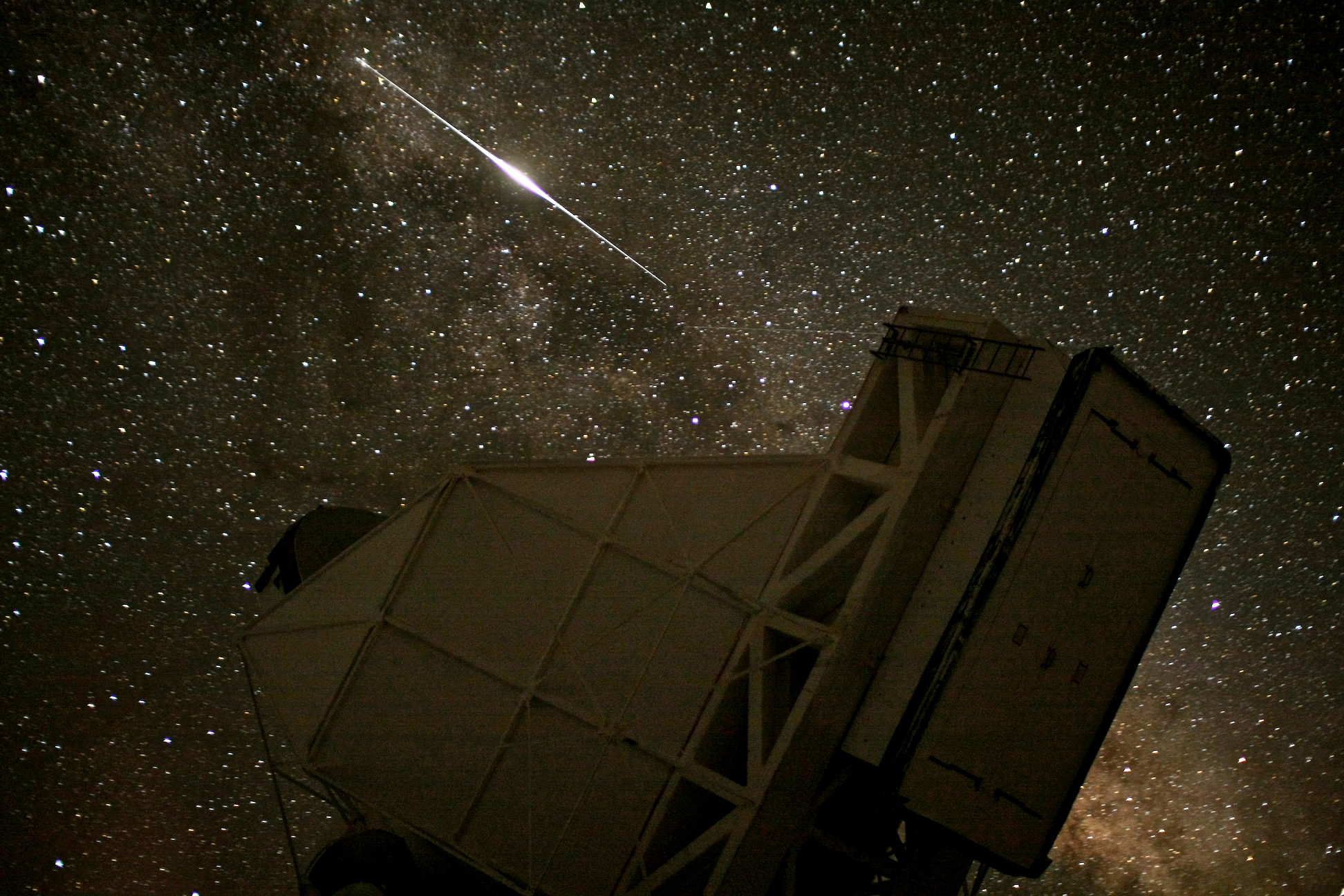
Flares also reportedly may be generated by the satellites' two solar panels. When deployed as intended, an Iridium satellite's spin axis points to the center of the Earth, while three silvered Main Mission Antennas lean outward, peppering Earth with data-bearing radio transmissions and the occasional glint of sunlight. Note that you can see some Iridium flares in daylight if your skies are very clear and you look in precisely the right direction! The site also will tell you how bright the flare should appear (in magnitudes), and where to go to see that particular flare at its very brightest (traveling just a few kilometers can make a big difference in the flare’s brightness). Each listing will tell you where in the sky to look - and when! - to see sunlight glint off an Iridium spacecraft's antenna panel. A few mouse clicks should produce a list of any Iridium flares occurring over your location in the next several days. This fascinating Web site is maintained by Chris Peat, a physicist and space-industry veteran who now works for the German Space Operations Center. Most would-be Iridium flare watchers need go no further than Heavens Above.
#Iridium flare software
What's more, these flares are predictable, thanks to the satellites' publicly available orbital elements and to software and Web sites that satellite-watching aficionados have made available free of charge. In skywatching circles, the Iridium satellites stand apart because their flat, shiny, door-size antenna arrays (three per spacecraft) periodically reflect sunlight toward the ground, causing brief (seconds-long) but brilliant flares that can momentarily reach an apparent magnitude of –8 - outshining the planet Venus.
#Iridium flare movie
For more information and higher-resolution movie files, visit Tom's Corner on the Software Bisque Web site. It was captured in real time using a Paramount ME robotic telescope mount, a 5-inch astrograph, and an ultrasensitive video camera. On the morning of August 8, 2006, an Iridium flare over Golden, Colorado, reached magnitude –3.4. Department of Defense and Federal Emergency Management Agency are among the principal customers of the satellites' current corporate owner, Iridium Satellite LLC of Leesburg, Virginia.

However, Iridium LLC never obtained the millions of customers needed to make the project profitable.
#Iridium flare portable
The spacecraft (and the ground stations supporting them) were intended to enable owners of special portable telephones to communicate from any point on the surface of the globe. In financial circles, the Iridium "constellation" of satellites stands apart because it was built at a cost of roughly $5 billion, only to be sold for $25 million when its first corporate owner, Iridium LLC, went bankrupt in 1999. Known as an iridium flare, the glare from these satellites is well known to many astronomers. Of the roughly 3,000 spacecraft in Earth orbit, nearly 100 stand apart: the Iridium communications spacecraft, which skim the uppermost, most rarefied region of the atmosphere (the exosphere) at altitudes around 800 kilometers in six steeply inclined orbital planes (orbits that nearly pass overhead at the North and South Poles). EST on February 1, 1998, as Sky & Telescope senior editor Dennis di Cicco waited with his camera, taking a 10-minute exposure on Fujichrome 100 slide film through an 80-mm f/2.8 Hasselblad lens working at f/4. You can find predictions for Iridium flares, and the visibility of the ISS, Space Shuttle, Hubble, and other satellites for your observing location at the Heaven's Above web page.Iridium satellite number 35 lit up the predawn sky west of Boston at 5 a.m. The flares last only a couple of seconds and are visible from a path only about 10km wide. Iridiums are communications satellites in orbit around the Earth that occasionally reflect direct sunlight off highly reflective surfaces such as antennas or solar panels to a particular location on the Earth. These satellites are only normally visible only at about magnitude 6, and the flare represents a brightening of some 13 to 14 magnitudes, a factor of about 158,000x to 398,000x.

The flares, at magnitude -7 and -8, from Iridium numbers 59 and 96, occurred about 2 minutes apart in time, but very close to the same location in the sky.


 0 kommentar(er)
0 kommentar(er)
